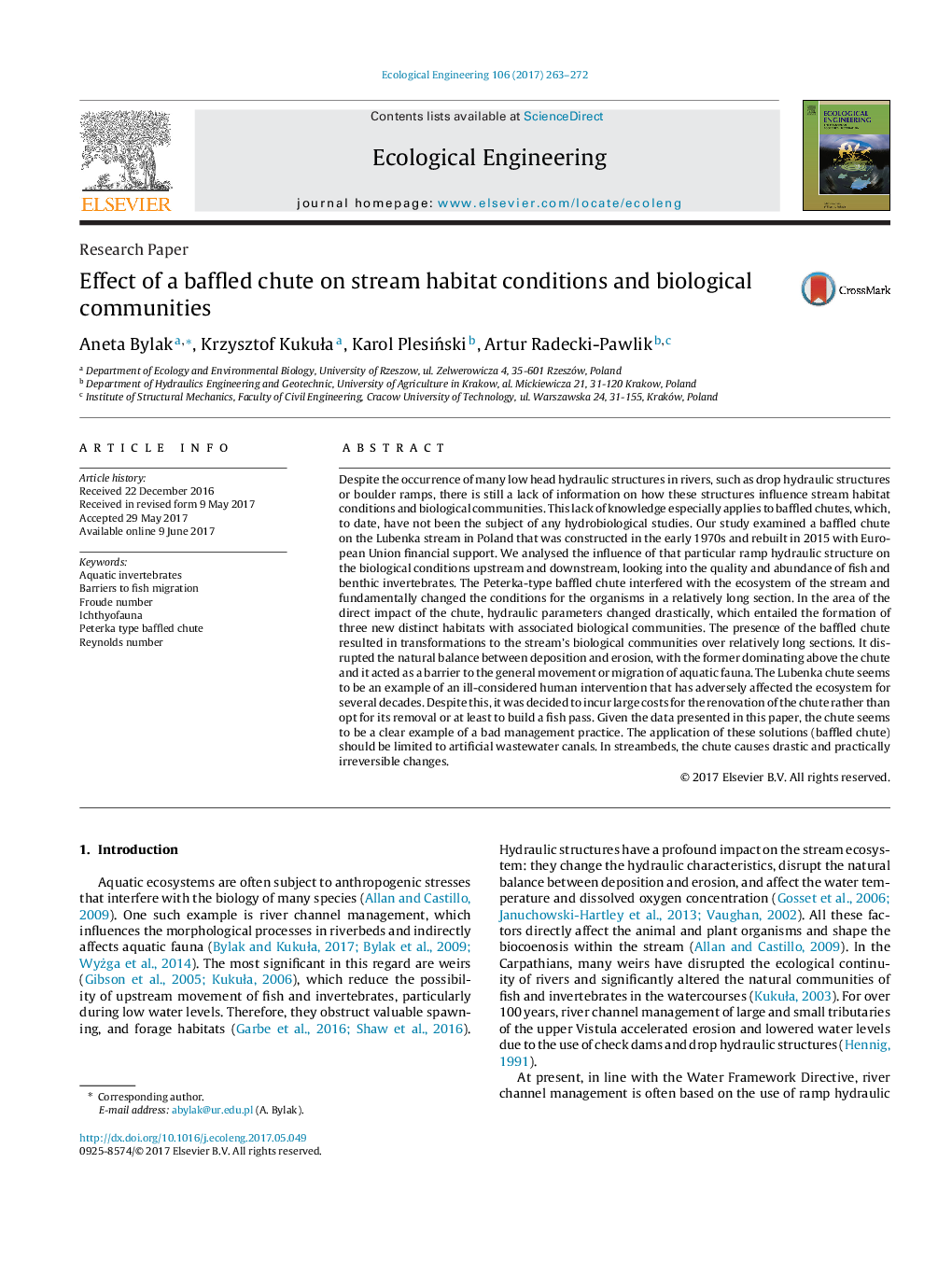| Article ID | Journal | Published Year | Pages | File Type |
|---|---|---|---|---|
| 5743842 | Ecological Engineering | 2017 | 10 Pages |
â¢The Peterka-type baffled chute strongly interfered with the stream ecosystem.â¢In the area of direct impact of the chute hydraulic parameters changed drastically.â¢Baffled chute entailed the formation of three new distinct biological communities.â¢The Peterka-type baffled chute acted as a barrier to the migration of aquatic fauna.â¢Analysed chute seems to be an example of an ill-considered human intervention.
Despite the occurrence of many low head hydraulic structures in rivers, such as drop hydraulic structures or boulder ramps, there is still a lack of information on how these structures influence stream habitat conditions and biological communities. This lack of knowledge especially applies to baffled chutes, which, to date, have not been the subject of any hydrobiological studies. Our study examined a baffled chute on the Lubenka stream in Poland that was constructed in the early 1970s and rebuilt in 2015 with European Union financial support. We analysed the influence of that particular ramp hydraulic structure on the biological conditions upstream and downstream, looking into the quality and abundance of fish and benthic invertebrates. The Peterka-type baffled chute interfered with the ecosystem of the stream and fundamentally changed the conditions for the organisms in a relatively long section. In the area of the direct impact of the chute, hydraulic parameters changed drastically, which entailed the formation of three new distinct habitats with associated biological communities. The presence of the baffled chute resulted in transformations to the stream's biological communities over relatively long sections. It disrupted the natural balance between deposition and erosion, with the former dominating above the chute and it acted as a barrier to the general movement or migration of aquatic fauna. The Lubenka chute seems to be an example of an ill-considered human intervention that has adversely affected the ecosystem for several decades. Despite this, it was decided to incur large costs for the renovation of the chute rather than opt for its removal or at least to build a fish pass. Given the data presented in this paper, the chute seems to be a clear example of a bad management practice. The application of these solutions (baffled chute) should be limited to artificial wastewater canals. In streambeds, the chute causes drastic and practically irreversible changes.
Graphical abstractDownload high-res image (181KB)Download full-size image
